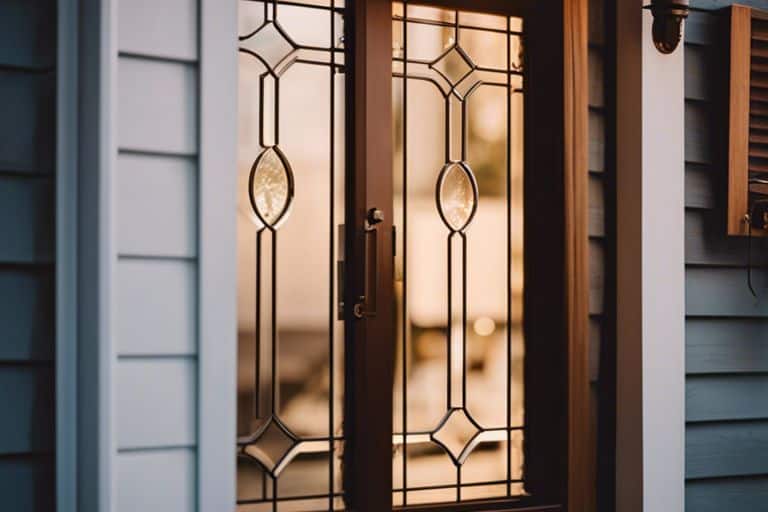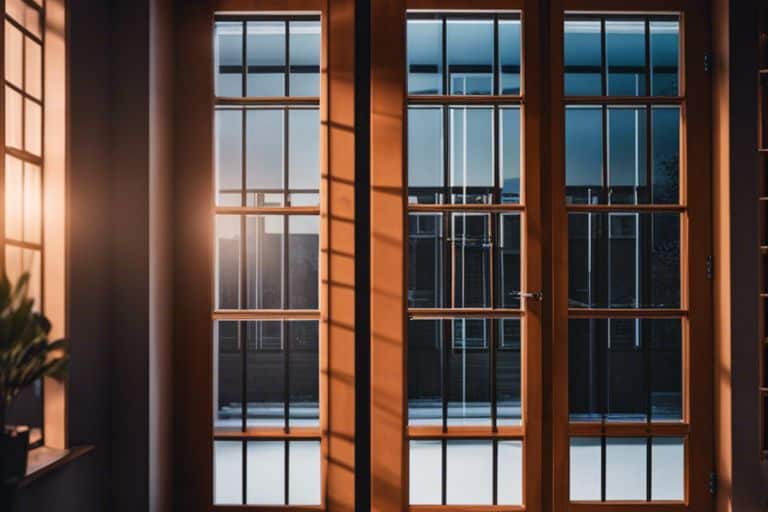Most vital to the longevity of your freshly painted wooden windows and doors is the curing process. Understanding why this step is crucial for durability can ensure your hard work lasts for years to come. Once the paint has fully cured, safely reinstalling the doors and windows without causing any damage is equally important. Our step-by-step guide provides expert tips for this final stage in the painting process. For detailed instructions on finishing wood windows and doors, refer to Step-by-step instructions for finishing wood windows and doors provided by Express Windows Group.

Key Takeaways:
- Curing is vital for durability: Curing allows the paint to fully bond and harden, ensuring a long-lasting finish on wooden windows and doors.
- Wait for the recommended curing time: Follow the paint manufacturer’s instructions for the curing period before reinstalling doors and windows to avoid premature damage.
- Safely reinstall doors and windows: Use proper lifting techniques and protective measures to prevent scratches or dents on the freshly painted surfaces during reinstallation.

Understanding Paint Curing
Definitions and Types of Curing
While the act of painting wooden windows and doors can instantly enhance their appearance, it is the curing process that truly determines the durability and longevity of the finish. Curing refers to the chemical process in which the paint dries and hardens, forming a protective layer over the surface. Different types of curing can affect the final outcome, including physical curing, chemical curing, and oxidative curing. Recognizing the specific type of curing required for your paint can ensure optimal results.
| Physical Curing | Involves the evaporation of solvents in the paint, allowing it to harden. |
| Chemical Curing | Occurs when the paint reacts with certain chemicals to form a strong bond. |
| Oxidative Curing | Involves the paint molecules reacting with oxygen in the air to harden. |
Factors Influencing Curing Time
Little do we realise that factors such as temperature, humidity, and the type of paint used can significantly influence the curing time of freshly painted windows and doors. Understanding these factors can help in ensuring the paint thoroughly cures, resulting in a resilient finish that will withstand the test of time. Perceiving these factors can save you from potential rework or premature wear and tear.
- Temperature: Higher temperatures can accelerate curing, while lower temperatures may slow it down.
- Humidity: High humidity levels can prolong the curing process, whereas low humidity can speed it up.
- Type of Paint: Different paints have varying curing times, so it’s necessary to follow manufacturer guidelines.
To ensure the optimal curing of your freshly painted wooden windows and doors, factors such as temperature, humidity, and the type of paint used must be taken into account. Perceiving how these factors influence the curing process can ultimately result in a durable and long-lasting finish that enhances the overall aesthetic of your property.
Step-by-Step Guide to Curing Paint on Wooden Surfaces
Assuming you’ve diligently followed the steps outlined in A beginner’s guide to painting wooden sash windows, the curing process is the final crucial step to ensure the durability of your freshly painted wooden windows and doors. Below is a breakdown of the curing process:
| Tips for Ensuring Even Curing |
Tips for Ensuring Even Curing
Ensure proper ventilation in the room to allow the paint to cure evenly. Avoid touching or closing windows and doors tightly until the paint is completely dry. Use fans or dehumidifiers to regulate the air moisture levels for optimal curing.
- The curing process can take anywhere from a few days to several weeks depending on the type of paint and environmental conditions. Patience is key in achieving a durable finish.
| How to Protect Freshly Painted Surfaces |
How to Protect Freshly Painted Surfaces
Guide against any accidental damage to the fresh paint by gently reinstalling doors and windows. For instance, use protective padding or cloth when handling hardware to prevent scratching the painted surfaces. Ensure that the paint has fully cured before reinstalling to avoid smudges or imperfections.
This service is provided by us, Express Windows Group, for all our wooden windows and doors.
Reinstalling Doors and Windows Safely
Unlike metal or plastic surfaces, wooden doors and windows require additional care during the reinstallation process to prevent damage to the fresh paint. For a detailed guide on how to repaint exterior wooden windows, doors and joinery, check out How to repaint exterior wooden windows, doors and joinery.
Tips for Handling Painted Doors and Windows
- Handle doors and windows with care to avoid scratching or chipping the paint.
- Use protective coverings or padding to prevent any impact during transportation.
- Ensure the paint is fully cured before reinstalling to prevent smudges or blemishes.
Thoroughly inspect the painted surfaces before reinstalling to ensure they are free of any imperfections. Thou, take extra precautions to prevent any damage during the reinstallation process.
Step-by-Step Process for Reinstallation Without Damage
| Step | Description |
| 1 | Remove any hardware attached to the doors and windows. |
| 2 | Securely attach protective coverings or padding to prevent scratching. |
| 3 | Ensure proper alignment of the doors and windows before fixing them in place. |
It is crucial to follow a systematic approach when reinstalling doors and windows to avoid any damage to the fresh paint. Prioritize precision and caution throughout the process to ensure a seamless reinstallation without compromising the durability of the paintwork.

Pros and Cons of DIY vs. Professional Reinstallation
| DIY | Professional |
| Cost-effective but time-consuming | Efficient but higher cost |
| Requires some skill and tools | Experienced professionals with specialised tools |
| Control over the process | Professional finish and guarantee |
| Potential for mistakes | Quality assurance and expertise |
Evaluating Skills and Tools Required
You should assess your DIY skills and available tools before deciding on reinstallation. Proper tools and know-how are crucial to avoid damage to the fresh paint or the wooden windows and doors.
When to Consider Professional Help
Help from professionals should be considered if you lack the necessary skills or tools for a safe reinstallation. Professional reinstallation can ensure that the paint job remains pristine and that the windows and doors are securely and correctly fitted.
When opting for professional help, you can be assured of expert precision in the reinstallation process. This guarantees both the durability of the paint job and the longevity of your wooden windows and doors. With our services at Express Windows Group, we provide a professional touch that ensures a flawless final result.
Conclusion
With this in mind, the curing process for freshly painted wooden windows and doors is crucial for ensuring maximum durability and longevity. Properly cured paint will protect the wood from moisture and rot, ultimately extending the lifespan of your windows and doors. In the matter of safely reinstalling them, remember to handle with care and avoid any potential damage to the fresh paint. Take your time and follow our tips for a successful reinstallation process to maintain the beauty and integrity of your newly painted windows and doors. Here at Express Windows Group, we are committed to providing you with the highest quality service for all your wooden window and door painting needs.













